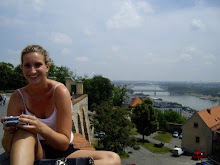But this does not mean that recycling is limited or that it is not making a difference (it just means that they need to fire their current advertisers and hire some young college grads, particularly those that are graduating Spring '08)
Here is just a sample of what people are doing to recycle goods across the planet:
Homeless people have been given recycling jobs in the US. The UK government is trying to encourage more people to recycle their waste and reduce the UK's waste mountain. Figures suggest 60% of all household waste could be recycled or composted, but the largest nation in the UK, England, appears to be reusing only 17.7%.
Curbside Recycling
earth911.org/recycling/curbside-recycling/
Curbside recycling now serves half of the U.S. population, providing the most convenient means for households to recycle a variety of materials.
While all curbside programs differ, the most commonly included materials are The Big Five: aluminum, glass, paper, plastic and steel.
If curbside recycling isn’t available in your area, consider starting your own recycling program.
Curbside recycling now serves half of the U.S. population, providing the most convenient means for households to recycle a variety of materials.
While all curbside programs differ, the most commonly included materials are The Big Five: aluminum, glass, paper, plastic and steel.
If curbside recycling isn’t available in your area, consider starting your own recycling program.
Recycling Process
Collecting and processing secondary materials, manufacturing recycled-content products, and then purchasing recycled products creates a circle or loop that ensures the overall success and value of recycling.
Collecting and processing secondary materials, manufacturing recycled-content products, and then purchasing recycled products creates a circle or loop that ensures the overall success and value of recycling.
Recycling Activities in Asia, Oceania and South America
http://www.sony.net/SonyInfo/Environment/recycle/asia/index.html
Sony promotes various recycling programs in Asia, Oceania and South America. Sony Korea Corporation collects and recycles PCs, televisions and audio products in line with recycling legislation that came into force in the Republic of Korea in 2003. In recent years, the number of pieces of electronic equipment collected directly through Sony Store outlets and service centers has increased. Similarly, Sony Taiwan Limited has continued collection and recycling of televisions and PCs in accordance with legal requirement established in 1998. In fiscal 2006, Sony Brasil Ltda. launched its own end-of-life battery collection program in cooperation with retailers. Batteries are collected through collection posts set up by Sony Brasil at Sony retailers across the country. Collected batteries are turned over to a recycling firm, where they are disposed of in an appropriate manner.
Sony promotes various recycling programs in Asia, Oceania and South America. Sony Korea Corporation collects and recycles PCs, televisions and audio products in line with recycling legislation that came into force in the Republic of Korea in 2003. In recent years, the number of pieces of electronic equipment collected directly through Sony Store outlets and service centers has increased. Similarly, Sony Taiwan Limited has continued collection and recycling of televisions and PCs in accordance with legal requirement established in 1998. In fiscal 2006, Sony Brasil Ltda. launched its own end-of-life battery collection program in cooperation with retailers. Batteries are collected through collection posts set up by Sony Brasil at Sony retailers across the country. Collected batteries are turned over to a recycling firm, where they are disposed of in an appropriate manner.



